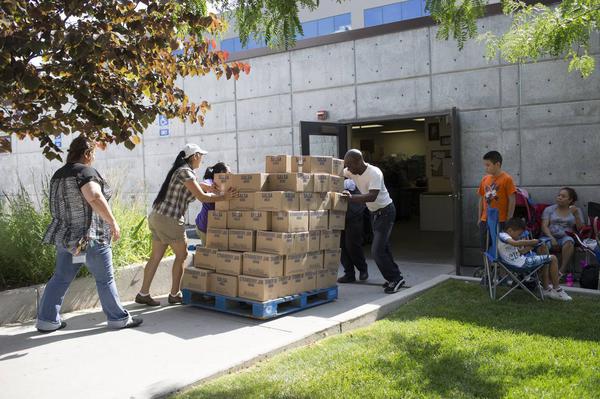My partner Roberto, of blessed memory, and I lived in Salt Lake City UT in the late 1980s as I worked on my project for my MTh. I was studying and writing about the Church of Jesus Christ of Latter-day Saints, the Mormons. An older woman lived in an apartment next to ours with her son who was the same age as Roberto and I. We didn’t know him well, just enough to say hello in passing as he and his mother kept to themselves. In the last few weeks of her life we learned that his mother was in the final stage of terminal bone cancer. We became alerted to this the first time paramedics were called in the early hours one morning. After that, we saw a steady stream of folks coming and going, women with covered dishes of food, three older men whom we later found out were the local bishop and his councilors, and a father & son team, whom we were told were this family’s Home Teachers.
In less than a month the woman died and we soon noticed that the son was boxing up their possessions and preparing to move to Provo UT to return to his college education at Brigham Young University which he had interrupted to attend his mother in the final months of her life. One day Roberto and I came home just as the young man had placed three boxes by our front door. He soon returned with two more boxes and said that they contained canned goods that his church had given to them. That was the day I learned about the LDS Church’s welfare program. The foundation of the program is each family preparing for the future by laying away a year’s supply of non-perishable food and the other necessities of daily life. These can be supplemented if needed by items such as the canned foods given to us that came from the LDS Bishop’s Storehouse.
The heart of the LDS Welfare system is Welfare Square in Salt Lake City about 8 blocks south and 8 blocks west of the LDS Temple in downtown Salt Lake City. It includes a 300,000 bushel grain silo, a milk-processing plant, a cannery, a bakery, a Deseret Industries thrift store, a private employment office, and the LDS Church’s largest Bishop’s Storehouse. The canned goods he shared with us included chili, beef stew, chicken, vegetables, fruit, jars of fruit jams and peanut butter. All sporting the Deseret label, “the brand that money can’t buy!”
As part of the activities of the 78th General Convention, Episcopalians attending the convention, as well as members from local Utah parishes, joined together on 29 JUN to participate in a service project at various LDS Welfare Square facilities. Some of them joined Rebecca Thompson of New Orleans, Louisiana as they packaged cheese that was made in the milk processing plant. Other folks gathered in the bakery to slice and then package freshly baked bread. A third group met in the cannery to bottle salsa. Amy O’Donnell, wife of the Rt. Rev. Scott B. Hayashi, of the Diocese of Utah, participated and said that being part of the service project was a real eye opener for attendees.
When the LDS Church assists folks through the welfare program, they may ask folks to later volunteer in the welfare program so that they don’t feel that they are being handed a dole. True to form, the next day, trucks from Welfare Square arrived at Hildegarde’s Pantry, a food bank and distribution center operated by St Mark’s Episcopal Cathedral with $20,000 of donated food; cheese, bread and salsa, as well as peanut butter, jam and more.
Story and photos from the Deseret News.
Video from the LDS Church.
Posted by David Allen

